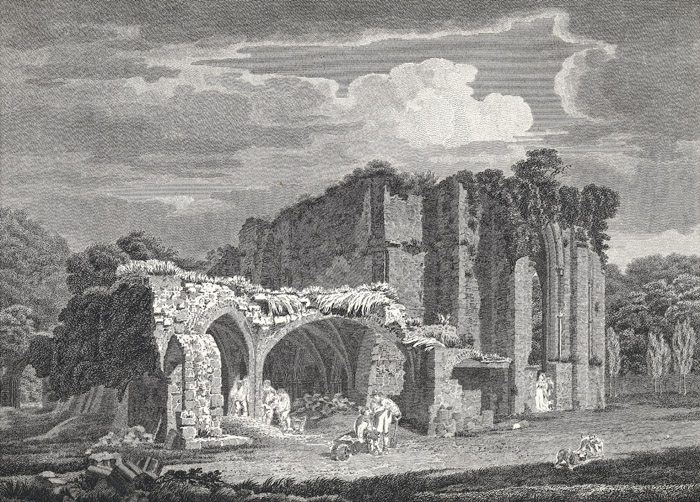The Castles and Abbeys of England, from the National Records, Early Chronicles and Other Standard Authors … Illustrated by Upwards of Two Hundred Engravings (1842)

In Glamorganshire, Wales, Margam Abbey sits. In the late 18th century, redevelopment took place on the buildings and grounds so that the gothic abbey became a ruin in 1799. In early 19th century the park was extended and the present Margam Castle constructed between 1830 and 1840 to serve as the main seat for Christopher Rice Mansel Tablot.
An intrepid Regency travel might have visited the site to marvel in the development taking place or enjoy the ruins. Nearby Margam village was described, in an 1810 guide, as “delightfully situated under a magnificent and perpendicular wood of oak, abounding in monastic antiquities.” Margam Park was also known broadly for its orangery, which may have been of special interest to visitors.










Fascinating! I just looked up more information about the abbey and the glorious beech beside it. Thank you for sharing.
So glad it was interesting!